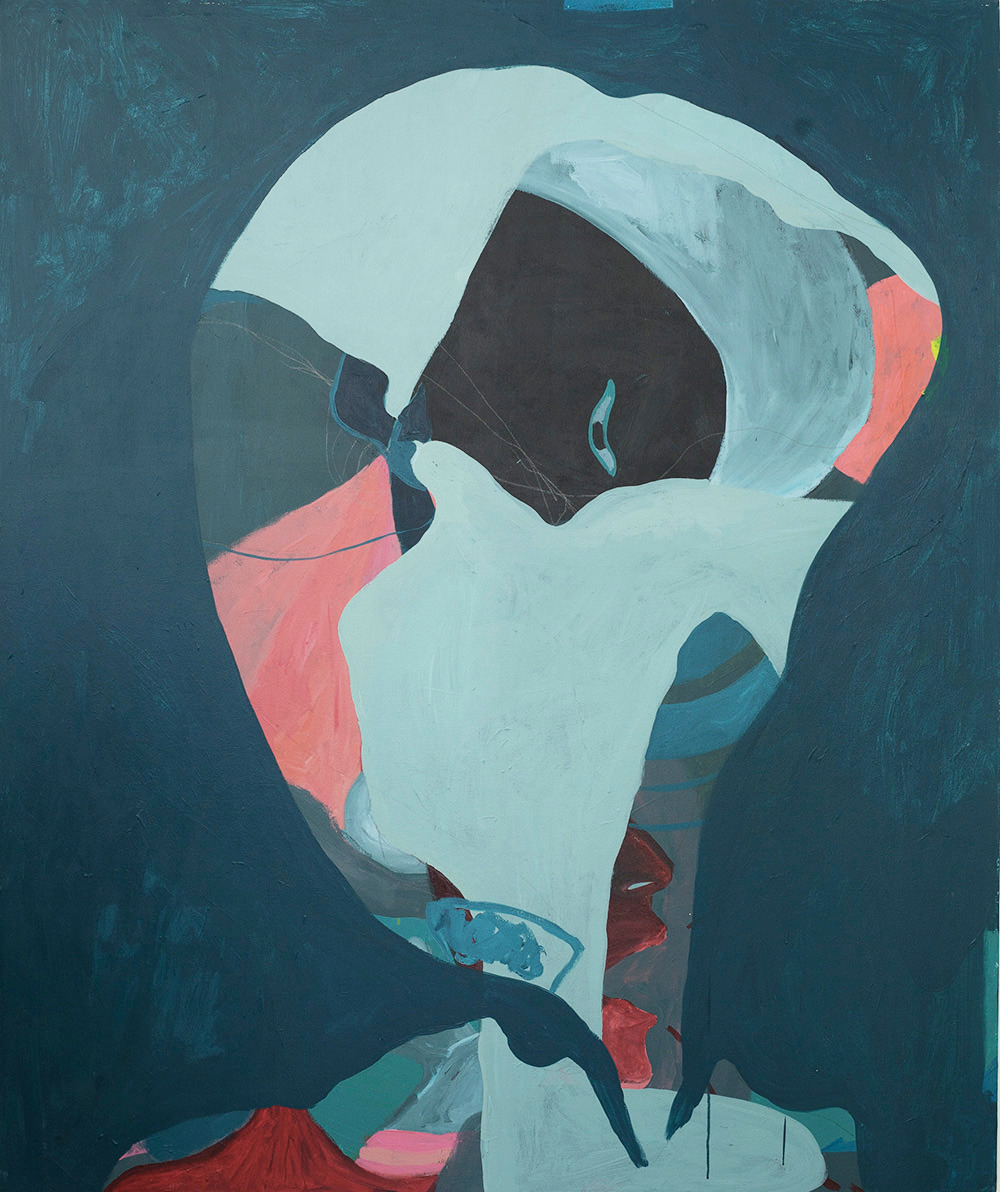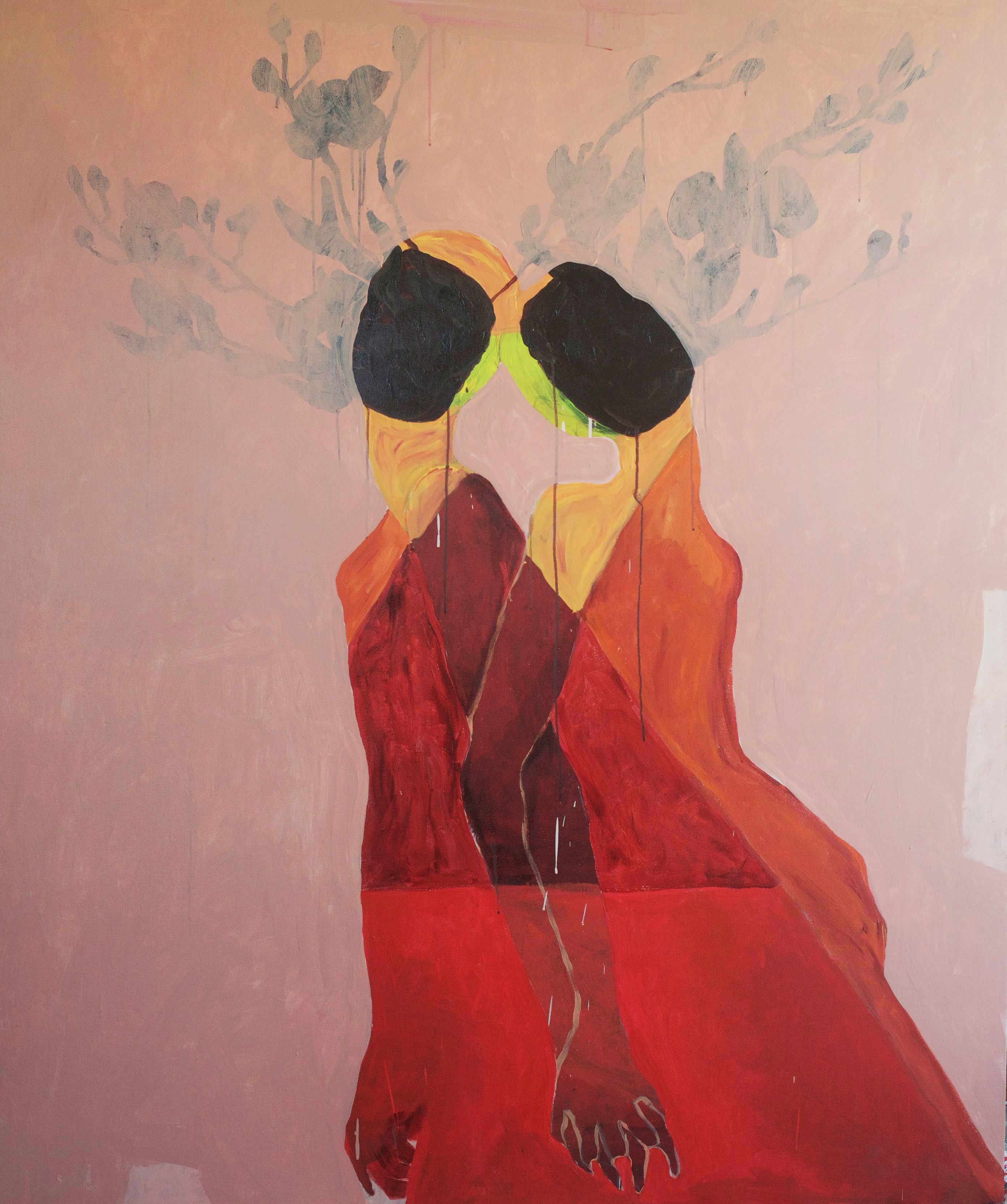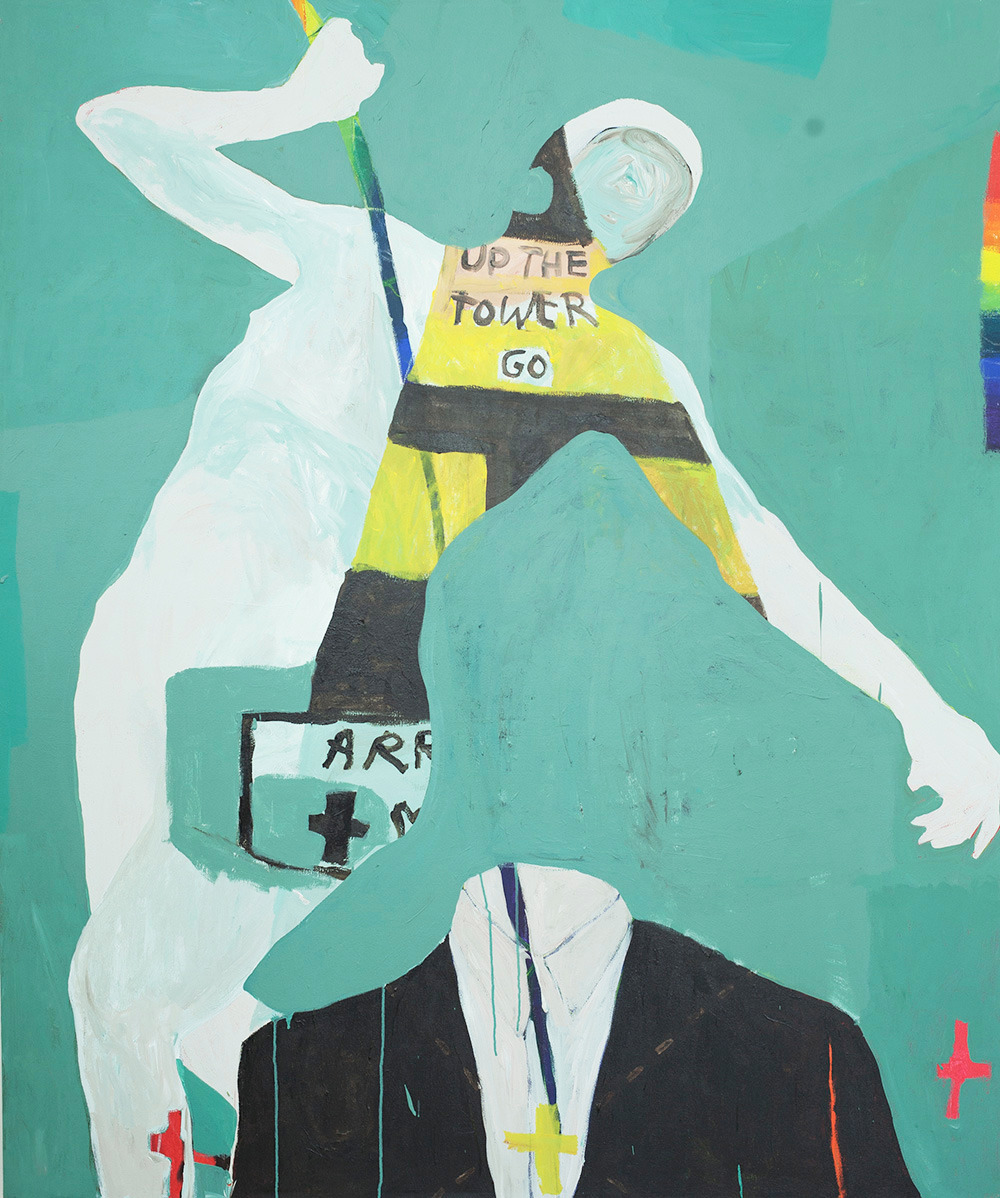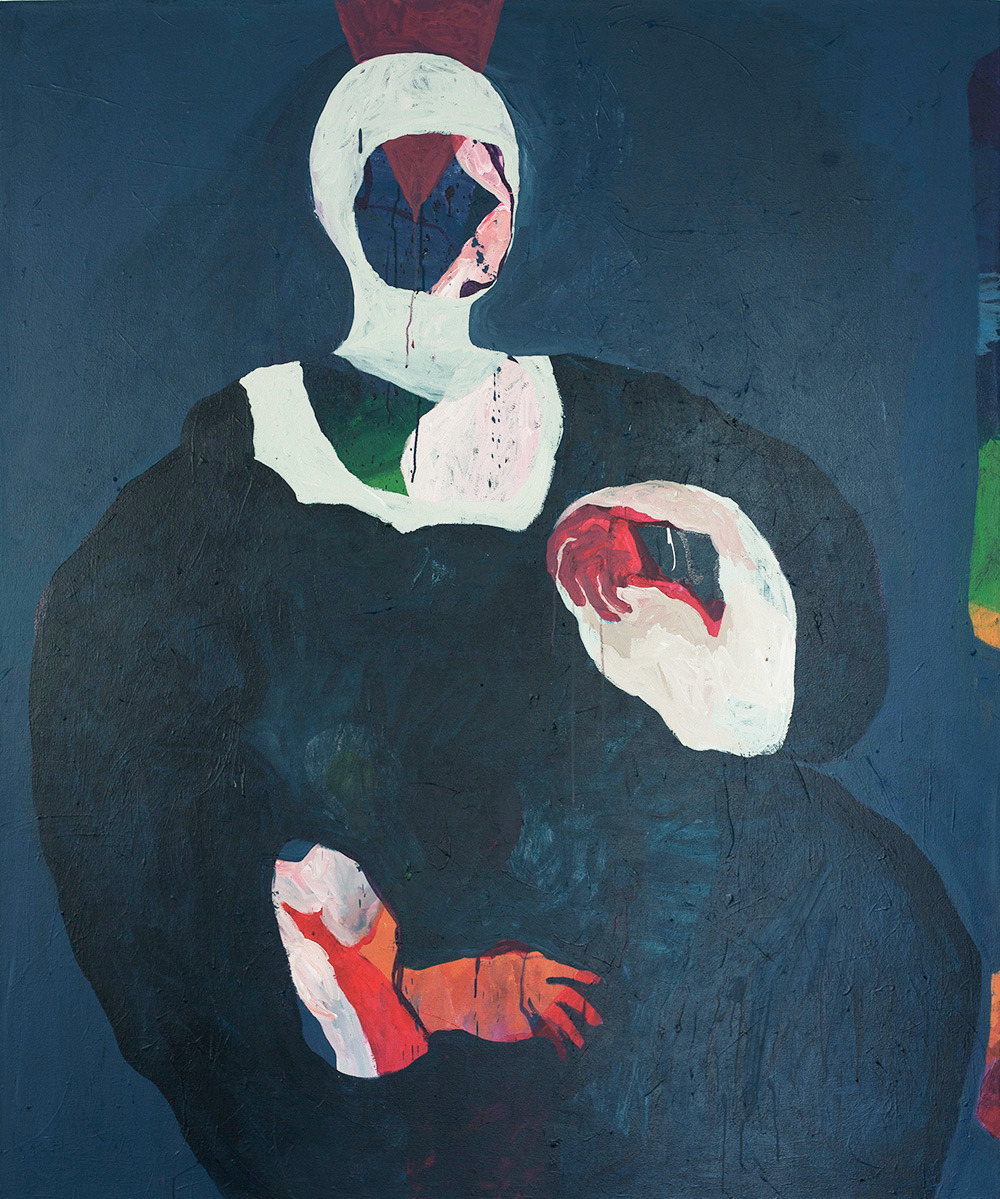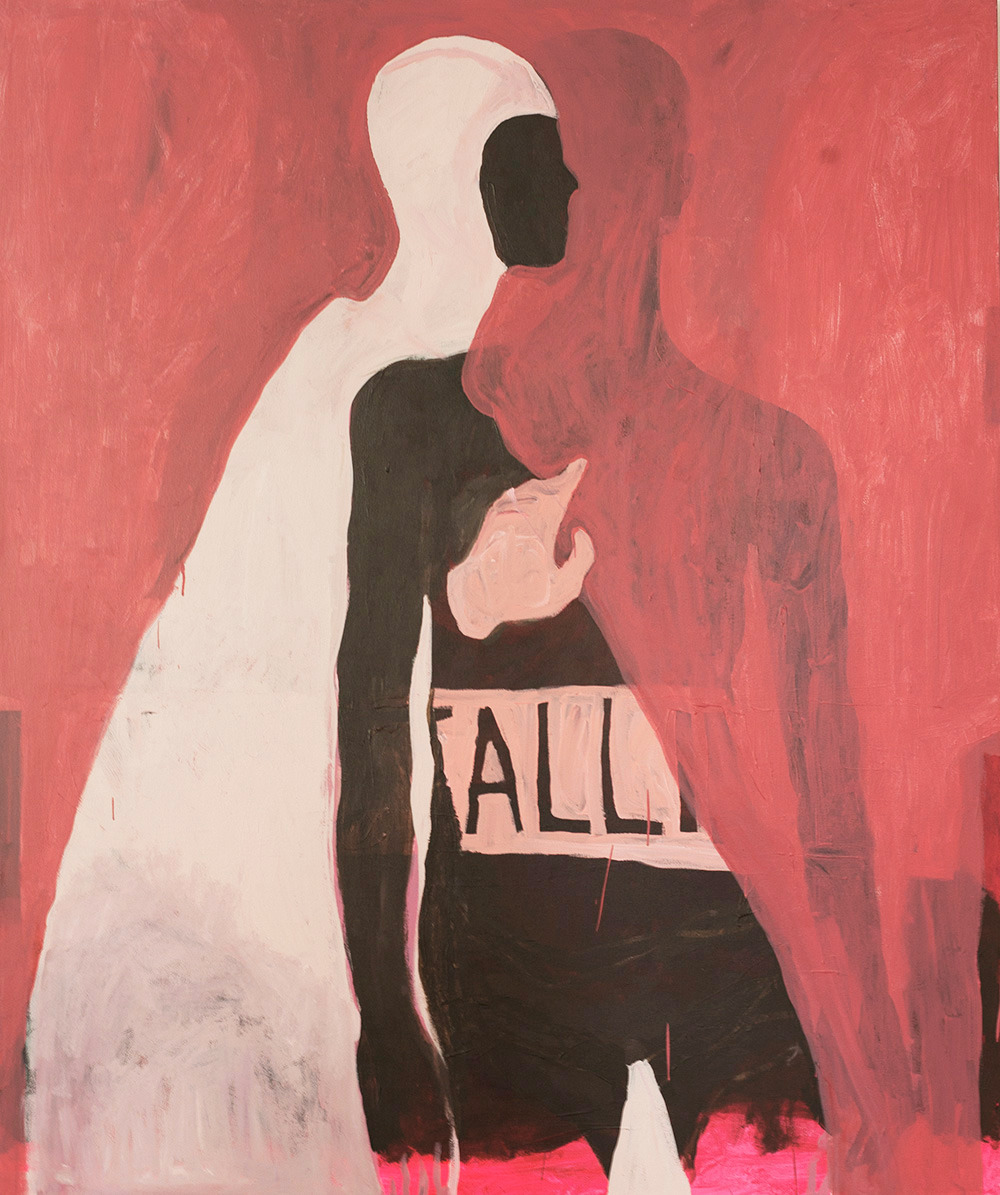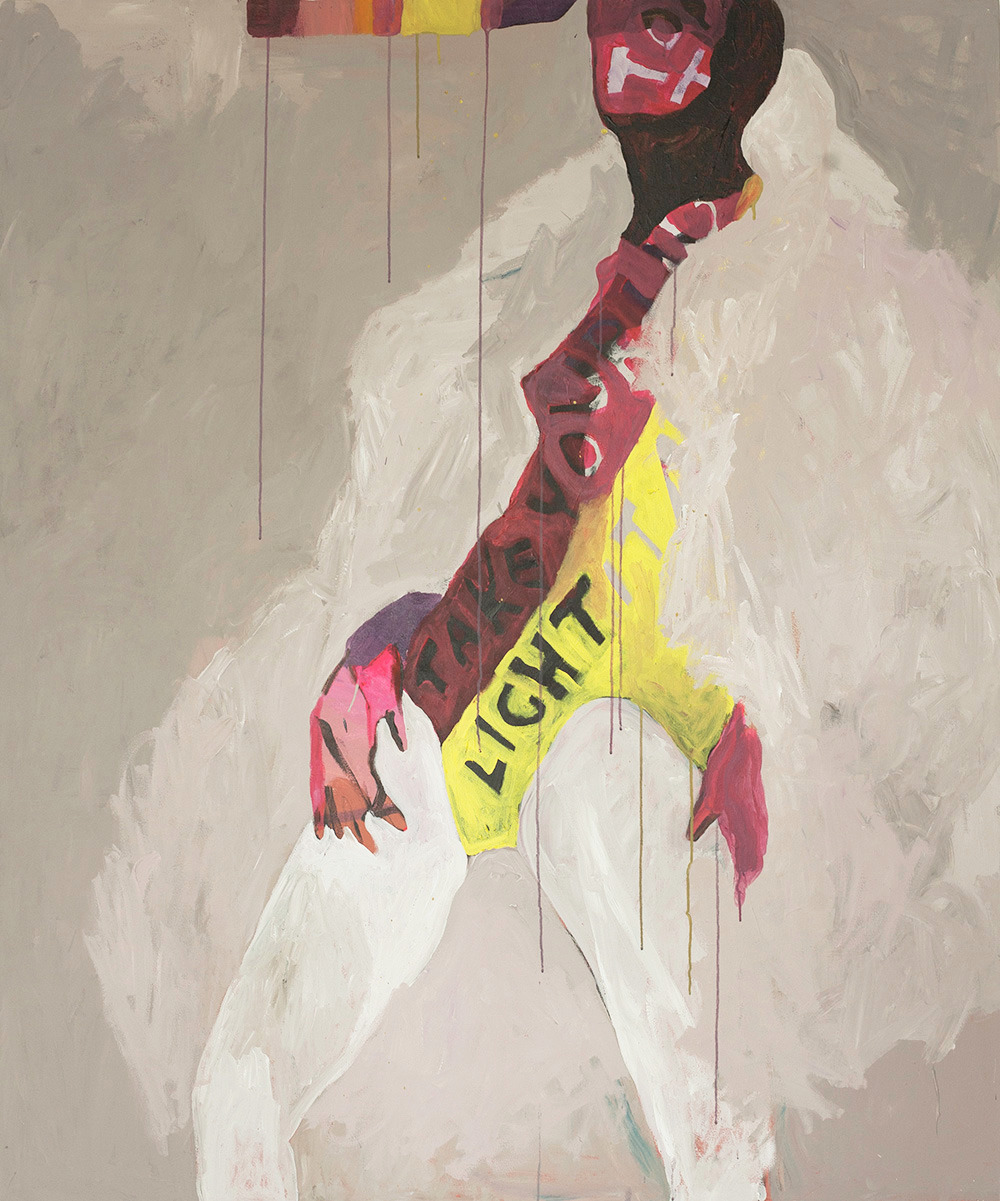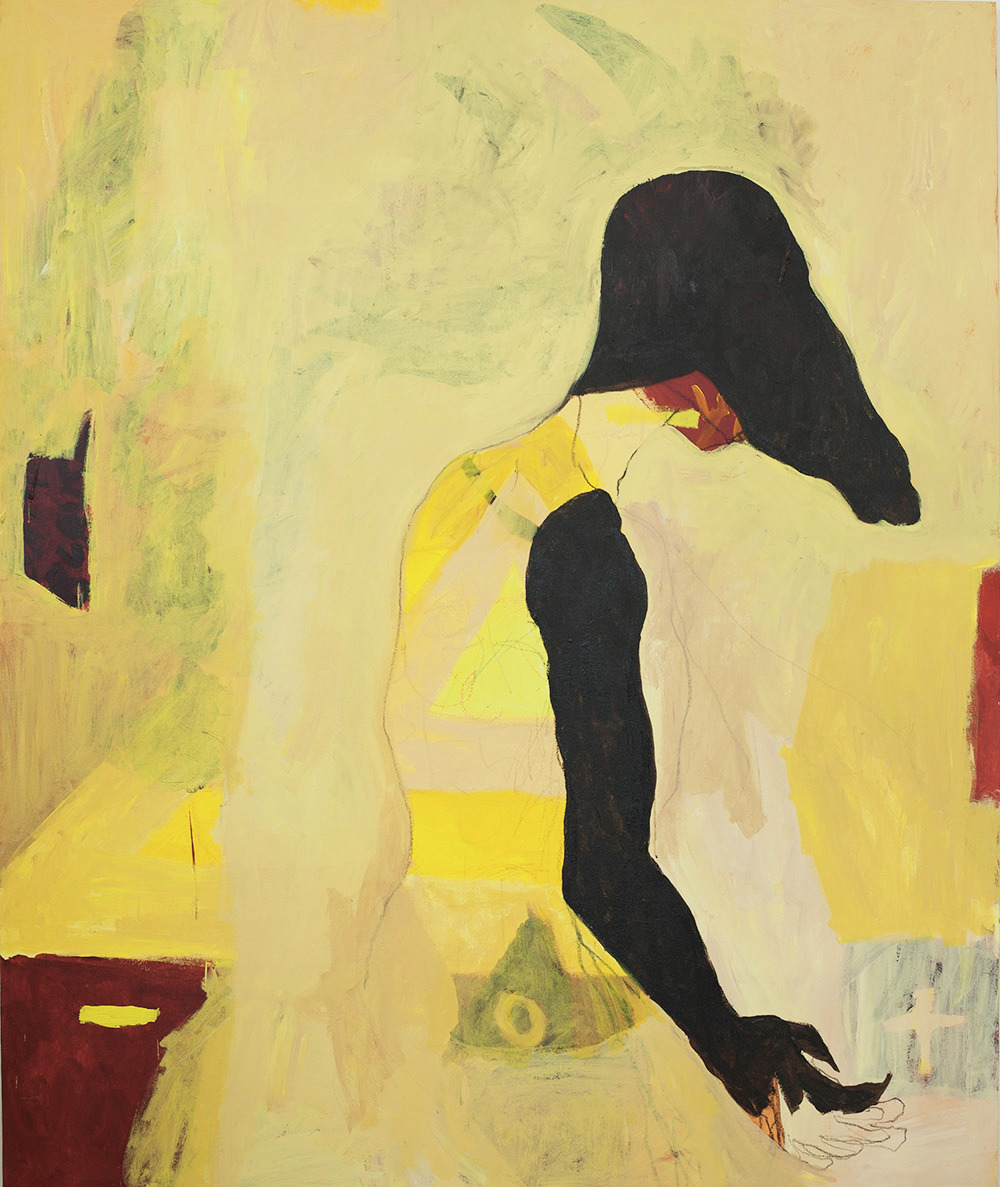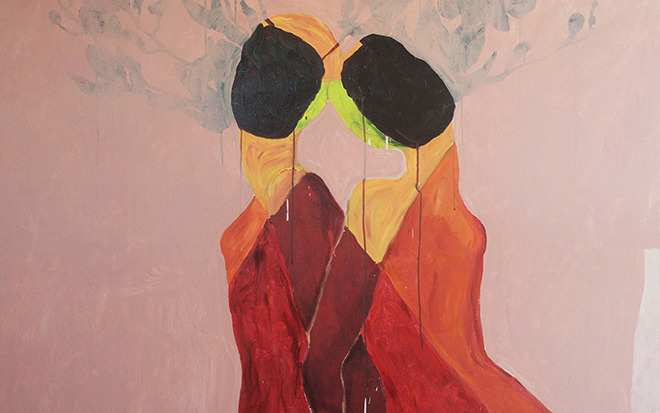
The Way In/The Way Out
Chati Coronel
Silverlens, Manila
About
Chati Coronel is a painter and a Buddhist. Not a painter first, a Buddhist second. Not the other way around either. She’s both at the same time and every time. The symbiotic way her art and her spirituality feed off each other and the way it blurs whatever lines demarcate one from the other is both the core of her praxis and the thrust of her oeuvre. “Painting has always been intimately woven into my spiritual practice.” Her paintings are hooked on dichotomies; it’s a fix, a bewilderment, a compulsion, this teasing of whatever resident synergies transpire between seemingly opponent matters: flesh and spirit, mass and space, poetry and painting. When she talks about her art, its protocols and processes, she does so with equal measures of a scientist’s curiosity and an explorer’s restlessness, but always tempered by the sort of ecstatic, awestruck surrender that befits devotees.
Coronel has had resonant congress with the book Cosmic Memory to the point that Rudolf Steiner’s wild treatise on the evolution of human consciousness is both the inspiration and the impetus of her new show. Her fascination with human consciousness, in all its myriad permutations and implications, has been a sort of thematic bedrock that buttresses everything she does, both her terra firma and her terra incognita. But The Way In/ The Way Out is probably her most overt exploration.
The way Coronel sees it, human consciousness is like energy, moving through our bodies like oxygen and making us vital and wakeful and lucid in the process, while also being as invisible and as ungraspable and as fugitive and as mysterious: the life-force as enigma. “I think consciousness is our main currency. Your power goes where your consciousness goes.” This is the experience she not only wants to evoke but also to induce, using color, specifically our experience and perception of it, as accelerant, as conduit. “The outer form on the painting may not even reveal the color underneath. I am hoping each painting's "activating" color will be more felt that seen.” The show’s title refers to Buddhist Mandalas and Thangkas, which are meditative aids used the way one would maps, with consciousness as one’s terrain.
“During the course of painting each piece, the forms that come about are not as deliberate as the process that I have designed for myself. What we see on the outside of my paintings is ritual residue. The main outer form is a window through which the viewer can glimpse the story of each piece. The outer image is something that is meant to draw the viewer in.” There are seven acrylic paintings making up its entirety. There is a specific color per painting. There is also a specific sequence in which they are painted. Each color is applied with the same layering technique she’s used in much of her work. Each color has varying effects on the image: obfuscating, fragmenting, diffusing, and altering. These aren’t so much constraints as they are conditions Coronel imposed on herself, right down to the size of each canvas, which are all 6 feet by 5 feet, dimensions she’s not used to but are integral to the vision. “I like to think this is the level I am working with, not psychological or conceptual, but atomic, playing with the atoms in a particular space. I want it to be easier for the viewer to imagine stepping into each piece. Almost like stepping into a portal.”
There is a ritualistic fervor to the way Coronel intends each color to be an energy center, not to mention a symmetry to the design of the whole, that makes it seem less of an imposition and more of a liberation, less of an obstruction and more a function of process, a process that for all its deliberate specificity, for all its stringent rigor, remains given over to the fluctuations and temperaments and whims of the experience she’s trying to activate. “I keep consciously designing my method but I usually leave the outer form of the painting to chance, or maybe to the subconscious. The outer forms may be less deliberate, but there is usually an underlying thread, a coherence that comes about.”
Words by Dodo Dayao
Obliquely arriving at painting by way of a Degree in Architecture, Chati Coronel (b. 1970, Manila; lives and works in Manila) has consistently found honest expression through painting for the past 20 years. Although her influences include a whole spectrum from Tibetan Buddhism to fairy tales and poetry, Coronel’s artistic vision is crystal clear. She is known for her multi- layered paintings that make use of raw strokes, rough lines and soft colors to arrive at a primal core.
Coronel was the recipient of a Freeman Asian Fellowship Grant, a one-month artist residency at The Vermont Studio Center in 2000. She was one of 5 artists chosen to participate in Louis Vuitton’s 20th Anniversary Exhibit in Manila in 2013 and her The First Kiss on Earth exhibit in Singapore was listed in Artnet’s Top Ten International Summer Shows of 2014.
Dodo Dayao writes, paints, makes films. He recently directed his first feature, Violator, and is finishing his first book of
essays. He lives in Quezon City and is always working on something.
Works
